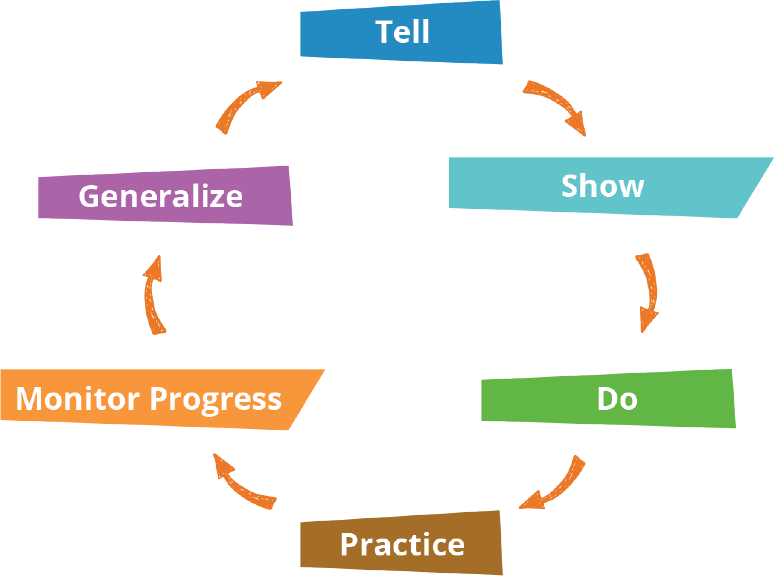Brief #5 – Teaching Children to do Nice Things for Others
Intervention Simplified
Teaching children to do nice things for others
A social awareness skill
Stephen N. Elliott, PhD

Teaching children to do nice things for others who may be having trouble or experiencing a problem is a fundamental aspect of empathy and a key social awareness skill (CASEL, 2012). This skill is highly valued by parents and teachers and can be directly taught and supported in every classroom (Elliott & Gresham, 2008). This intervention brief describes how to teach an entire classroom of students this skill using the intervention resources of the SSIS™ SEL Edition Classwide Intervention Program (CIP; Elliott & Gresham, 2017).
Overview of the SSIS SEL Edition CIP
The SSIS SEL Edition CIP is used by educators to develop and improve 23 social−emotional skills for children ages 4 to 14. Specifically, this intervention program provides interventionists with a SAFER—Sequenced, Active, Focused, Explicit, Responsive—way to teach children social−emotional skills that represent five core competencies: self-awareness, self-management, social awareness, relationship skills, and responsible decision making. These social−emotional learning (SEL) competency domains are based on the Collaborative for Academic, Social, and Emotional Learning (CASEL, 2012) framework and are popular in many SEL programs across the country.
The social awareness skill domain, as assessed by the SSIS SEL Edition Screening/Progress Monitoring Scales (Elliott & Gresham, 2017) and taught in the SSIS SEL Edition CIP, focuses on a family of three skills: Do Nice Things for Others, Stand Up for Others, and Make Others Feel Better. To successfully employ these skills, students need to recognize feeling of others, assess a social situation to determine what is happening, and respond by providing another person attention and a supporting action such as calming words, help to reduce the pain of a physical or emotional injury, time with them, and sometimes a pat on the back or comforting hug.
The SSIS SEL Edition CIP uses a six-phase intervention process to teach social−emotional skills: Tell, Show, Do, Practice, Monitor Progress, and Generalize. DiPerna and colleagues (2015, 2016, 2017), in a randomized control trial in six elementary schools funded by the U.S. Department of Education, provided strong evidence to support the SSIS SEL Edition CIP’s six-phase program. Specifically, they reported students (1) learned social−emotional skills and performed these desired behaviors more frequently, (2) concurrently reduced the frequency of many common externalizing problem behaviors, and (3) increased academic engagement and achievement test scores. This research documenting the triple positive impact of the SSIS SEL Edition CIP resulted in CASEL designating it “a SELect program for elementary students” (https://casel.org/guideprogramssocial-skills/).
Teaching a social awareness skill: Do nice things for others
In the SSIS SEL Edition CIP, doing nice things for others is defined as showing we understand another person’s situation and want to help them feel better. The steps for this skill are outlined in the Unit 10: Do Nice Things for Others Skill Steps Cue Card and are described as follows:
• Step 1: Think about what the problem is and how you can be helpful.
• Step 2: Feel by considering how the person feels and would could improve that feeling.
• Step 3: Talk with them to determine if you can be helpful.
• Step 4: Do something that will be helpful and smile to show them positive attention.
Using the six-step SSIS SEL Edition CIP instructional process, the key actions and activities for both the teacher and a classroom of students are listed in the table below.
By following this instructional process, most teachers can teach a skill lesson in 25 to 30 minutes and provide a SAFER intervention program that students enjoy and learn from. At the center of this process is a series of role-play situations (illustrated in the accompanying box) that students practice and then receive feedback on each Skill Step in a supportive classroom environment. With the additions of other SSIS SEL Edition CIP resource materials—PowerPoint™ lesson presentations, video clips, Emotions Cue Cards, Student Engagement Records—all students will be engaged and the intervention is simplified for teachers!



References
Collaborative for Academic, Social, and Emotional Learning. (2012). Effective social and emotional learning programs. Retrieved from https://casel.org/wp-content/uploads/2016/01/2013-casel-guide-1.pdf
DiPerna, J. C., Lei, P., Bellinger, J., & Cheng, W. (2015). Efficacy of the Social Skills Improvement System Classwide Intervention Program (SSIS-CIP) primary version. School Psychology Quarterly, 30(1), 123–141. doi:10.1037/spq0000079
DiPerna, J. C., Lei, P., Bellinger, J., & Cheng, W. (2016). Effects of a universal positive classroom behavior program on student
learning. Psychology in the Schools, 53(2), 189–203. doi:10.1002/pits.21891
DiPerna, J. C., Lei, P., Cheng, W., Hart, S. C., & Bellinger, J. (2017). A cluster randomized trial of the Social Skills Improvement System-Classwide Intervention Program (SSIS-CIP) in first grade. Journal of Educational Psychology, 110(1), 1–16. doi:10.1037/edu0000191
Elliott, S. N., & Gresham, F. M. (2007). Social Skills Improvement System Classwide Intervention Program teacher’s guide. Bloomington, MN: NCS Pearson.
Elliott, S. N., & Gresham, F.M. (2017). SSIS SEL Edition Classwide Intervention Program manual. Bloomington, MN: NCS Pearson.
Stephen N. Elliott, PhD, is the Mickelson Foundation Professor at Arizona State University and the co-author of the SSIS SEL Edition Assessments and Classwide Intervention Program.
© 2018 Pearson Education, Inc. or its affiliates. All rights reserved. Pearson and SSIS are trademarks, in the US and/or other countries, of Pearson plc. LRNAS15520 EL 9/18
